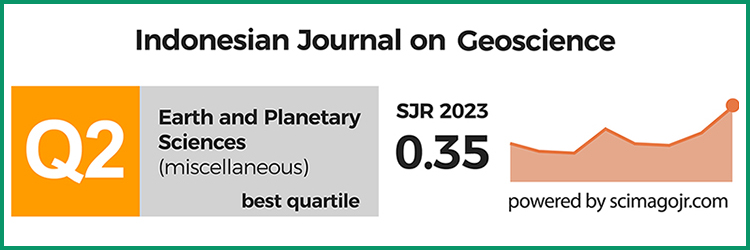Integration of Soil Shear Strength Analysis with Wave Force Calculations to Optimize Coastal Slope Stability
DOI:
https://doi.org/10.17014/ijog.12.2.145-162Abstract
Coastal regions face significant challenges due to the dynamic interplay between waves and soil slopes, which can lead to instability and erosion. This study investigates the stability of coastal slopes under wave-loading conditions by integrating soil shear strength analysis with wave-induced forces calculation. The simplified slope stability analysis method serves as the framework for assessing slope stability, while wave characteristics such as height, period, and direction are considered to calculate driving forces induced by waves. Soil shear strength parameters, including cohesion and friction angle, are incorporated to determine the resisting forces within the soil mass. An example scenario illustrates the calculation process, demonstrating how wave shear stress and soil shear strength interact to influence slope stability. This research found that wave parameters such as height, period, and direction had a significant influence on the magnitude of the driving force acting on the coastal slope. The distribution of wave pressure and wave forcing is also described, showing a significant increase in pressure at certain depths. This research resulted in the integration of soil shear strength with calculations of forces caused by waves, which greatly influenced the stability of coastal slopes. This research shows that soil with higher shear strength has better resistance to forces caused by waves. Coastal slopes with a FoS value of more than 1 are considered stable, while slopes with a FoS of less than 1 indicate instability and potential failure. At a certain depth, driving forces are dominant, which increases the potential for slope failure. The main innovation of this research is the approach that combines hydrodynamic analysis with geotechnical analysis to assess coastal slope stability, the simplified slope stability method approach from Bea and Audibert (1981) to calculate FoS on coastal slopes, and the use of Historical Data and Numerical Modeling for
Force Evaluation Wave.



















